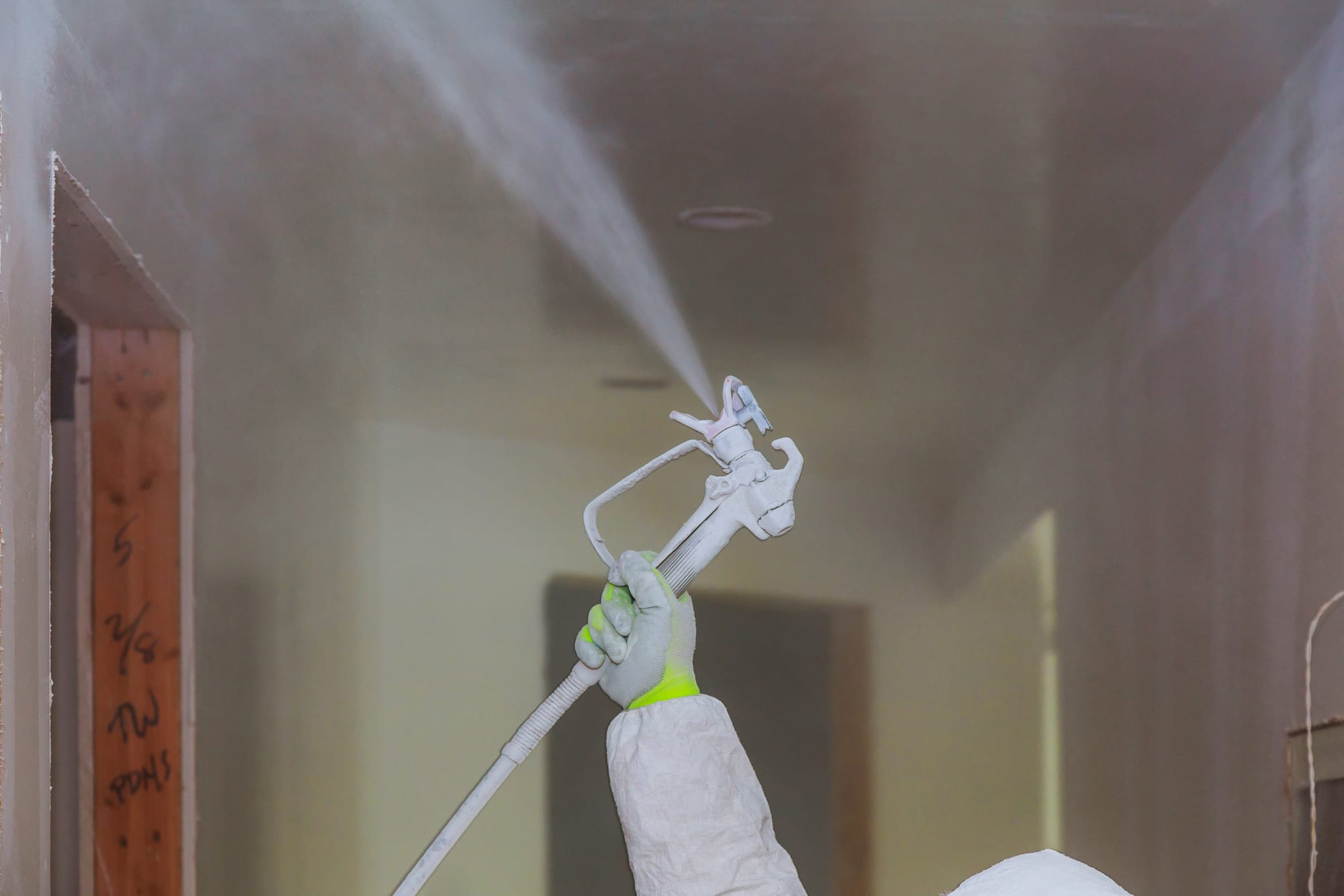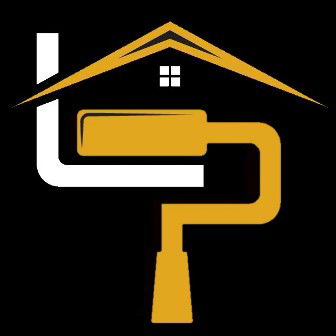Tips for Painting with a Sprayer

Key Features
- Professional, Even Finish: Paint sprayers provide a smooth, consistent finish ideal for larger surfaces like walls, cabinets, and fences.
- Efficiency in Application: Paint sprayers cover surfaces quickly, saving time compared to traditional brushes and rollers.
- Versatile Tool Options: From airless to HVLP and compressed air sprayers, there are models suited for a range of projects and paint types.
Master Your Next Project
If you're ready to speed up your painting projects and achieve a smooth, even finish, it’s time to embrace the power of a paint sprayer. Whether you’re tackling walls, fences, or cabinets, using a sprayer requires a bit of technique to avoid common pitfalls. Below, I’ll share expert tips for painting with a sprayer to help you achieve professional results without the hassle.
Why Use a Paint Sprayer?
A paint sprayer offers several advantages over traditional brushes and rollers. It’s fast, efficient, and provides a smooth, factory-like finish. However, like any tool, it requires proper handling to get the most out of it. With these tips, you’ll avoid drips, overspray, and uneven coatings.
How Do You Choose the Right Paint Sprayer?
Selecting the right sprayer depends on your project type and paint choice. Here are the main types of sprayers:
- Airless Paint Sprayer: Best for large surfaces like walls and fences. Delivers a high-pressure spray, perfect for thick latex paints.
- HVLP (High Volume Low Pressure): Ideal for cabinets or furniture, providing a finer finish with minimal overspray. Best with thinner paints or stains.
- Compressed Air Sprayer: Often used for smaller projects. It offers precise control but creates more overspray compared to HVLP.
The right sprayer ensures you get the best finish for your project without wasting paint or time.
How Do You Prepare Surfaces Before Spraying?
Surface prep is essential for good results. Here’s a checklist to follow:
- Clean the Surface: Wipe down walls, fences, or furniture to remove dust, grease, or grime.
- Sand Rough Areas: Smooth any uneven surfaces with sandpaper for an even coating.
- Use Drop Cloths and Tape: Cover floors, windows, and edges to protect from overspray.
- Prime the Surface: Some projects—like bare wood or metal—require primer for proper adhesion.
Taking the time to prep ensures your paint adheres correctly and prevents peeling or cracking down the line.
Things to Know
- Choose the Right Sprayer Type: Each sprayer type—airless, HVLP, or compressed air—has specific uses, so match it to your project.
- Surface Preparation is Essential: Cleaning and sanding ensure paint adheres properly and gives a professional result.
- Control Your Speed and Pressure: Moving too slowly or using too much pressure can lead to drips and overspray.
- Regular Maintenance Keeps Your Sprayer Working: Clean thoroughly after each use to avoid clogs and ensure longevity.
What’s the Proper Technique for Spraying Paint?
Getting the spray technique right can make or break your project. Here are some golden rules:
- Keep the sprayer 6-12 inches from the surface for consistent coverage.
- Use smooth, overlapping strokes: Start spraying just before the edge of the surface and maintain even movement.
- Test on cardboard first: Adjust the spray pattern and flow rate on a test surface before moving to the project.
- Move your arm, not your wrist: This helps maintain a consistent distance from the surface and avoids uneven coats.
Spraying in sections ensures better control and a more uniform finish.
How Do You Avoid Drips and Overspray?
Nobody likes drips or wasted paint. Here’s how to minimize both:
- Use thin, even coats: Multiple light layers are better than one thick coat.
- Adjust the spray pressure: Too much pressure can cause overspray, while too little can leave uneven coverage.
- Maintain a consistent speed: Moving too slowly can cause drips; too fast, and you might miss spots.
- Shield nearby surfaces: Use cardboard shields to catch any overspray on edges and corners.
Keeping a steady hand and consistent movement goes a long way toward achieving a flawless finish.
What Type of Paint Works Best with a Sprayer?
Different sprayers handle different types of paint. Here’s a quick guide:
| Sprayer Type | Best Paints | Ideal Projects |
|---|---|---|
| Airless Sprayer | Latex, Acrylic | Walls, Ceilings, Fences |
| HVLP Sprayer | Stains, Thinned Enamels | Cabinets, Trim, Furniture |
| Compressed Air | Lacquers, Oil-based paints | Small furniture, Crafts |
Always check the manufacturer’s guidelines for your sprayer to ensure compatibility with your chosen paint.
How Do You Clean a Paint Sprayer After Use?
Proper cleaning is crucial to keep your sprayer in good working condition. Here’s how to clean it effectively:
- Flush the sprayer with water or solvent: Use water for latex paints and paint thinner for oil-based paints.
- Disassemble and clean parts: Remove the nozzle and filters to scrub away paint residue.
- Inspect for clogs: Check hoses and the nozzle to ensure nothing is blocked.
- Store it properly: Keep your sprayer in a dry, safe place for the next project.
Regular maintenance extends the life of your sprayer and ensures it works efficiently every time.
How Can You Achieve a Professional Finish?
To get that showroom-quality finish, follow these tips:
- Apply a second coat: For the best coverage, let the first coat dry and apply a second light coat.
- Inspect in good lighting: Walk around the project to catch any missed spots or uneven areas.
- Use high-quality paint: The better the paint, the better the finish—simple as that.
- Ventilate your workspace: Proper ventilation prevents fumes from building up and ensures the paint dries evenly.
These small steps can make a significant difference in the final result.
In Our Experience
"In our experience, using a paint sprayer requires careful preparation but yields impressive results. Whether you’re a DIY enthusiast or a seasoned painter, investing in a quality sprayer and taking the time to practice with your tool will pay off with a finish that rivals factory-quality work. Proper technique and attention to detail go a long way in ensuring that your paint job is smooth and durable."
What Are the Common Mistakes to Avoid?
Here are a few common mistakes to steer clear of:
- Skipping preparation: Always clean and sand surfaces before spraying.
- Ignoring nozzle size: Use the right nozzle size for your paint to avoid clogs or uneven spray patterns.
- Using the wrong paint type: Ensure the paint is compatible with your sprayer.
- Skipping safety gear: Wear a mask and goggles to protect yourself from paint fumes and overspray.
Avoiding these mistakes will save you time, paint, and frustration.
Final Thoughts on Painting with a Sprayer
Using a paint sprayer can transform your painting projects, giving you a smooth, professional finish in less time. With the right preparation, technique, and tools, you can achieve impressive results on any surface. Just remember: practice makes perfect, so don’t be afraid to experiment with your sprayer until you feel confident in your skills. Happy spraying!
Do You Have Questions? Give Us A Call With Any & All! 503-389-5758
-
People Also Ask:
What type of paint sprayer is best for beginners?
HVLP (High Volume Low Pressure) sprayers are beginner-friendly, offering precise control with minimal overspray, making them ideal for smaller projects.
How do you prevent drips when using a paint sprayer?
To avoid drips, keep a consistent spraying distance, apply thin, even coats, and adjust the pressure for an even application.
Do you need to thin paint for a sprayer?
Some paints, especially latex, may need to be thinned for sprayers like HVLPs. Always check the paint and sprayer specifications.
-
SUBSCRIBE TO OUR BLOG: Stay informed with the latest in Painting and DIY projects by subscribing to Lightmen Painting. Get insights, tips, and more delivered straight to your inbox. We would also love to know what you would like to read about, leave thoughts on where we should go next. Interests, Topics, Ideas, all are welcome.
Get $3000 in assistant credits from Magic.com
^ Click Our Logo Above ^
If your in the Portland, Or. area and need advice or a free no obligation estimate call us at 503-389-5758 or email scheduling@lightmenpainting.com
Shout Out:
JustDial - Transform Your Space with Expert Spray Painting
We highly recommend exploring JustDial for top-rated spray painting services in Hyderabad. Whether for residential or commercial spaces, their expert finishes can breathe new life into your property. At Lightmen Painting, we value quality craftsmanship, and JustDial is a great resource to find it. Find more details at JustDial.
Thanks for stopping by Lightmen Daily! Stay tuned for more practical tips and expert advice on making your painting projects flawless, from wall to floor!
Definitions
- Paint Sprayer: A tool that sprays paint in a fine mist, allowing for even, quick coverage over large areas.
- HVLP Sprayer: High Volume Low Pressure sprayer, ideal for detailed work with minimal overspray, best with thinned paints or stains.
- Airless Sprayer: A sprayer that pumps high-pressure paint, best for large surfaces and thick paints like latex.
- Compressed Air Sprayer: Uses compressed air to spray paint, suitable for small projects with detailed control but more overspray.
- Overspray: Paint mist that extends beyond the target surface, often controlled by adjusting pressure or using shields.
- Nozzle Size: The diameter of the sprayer’s opening, affecting the flow and pattern of the spray.
- Spray Pattern: The shape and spread of the paint mist, adjustable on many sprayers for optimal coverage.
- Surface Preparation: Cleaning and sanding surfaces before painting to ensure smooth application and adherence.
- Thinning Paint: Reducing paint thickness for compatibility with certain sprayers, especially HVLP.
- Drop Cloths: Protective sheets used to catch overspray and protect floors and surfaces during spraying.
Lightmen Painting Serving: Portland, Tigard, Lake Oswego, Tualatin, West Linn, Milwaukie, Sherwood, Happy Valley, Oregon City, Beaverton, Hillsboro, Gresham -Trade Partners-

